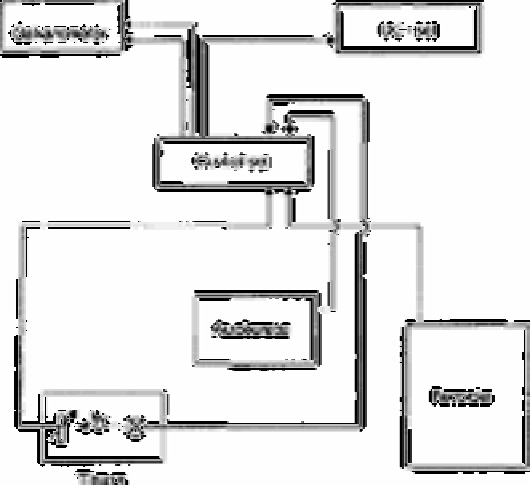Chemistry Reference
In-Depth Information
eliminated by lowering pH to 4-4.3 using nitric or perchloric acid. Interference from
calcium ions could be removed by an ion exchange process followed by titration with
sodium hydroxide in the presence of methanol to pH 5.0.
Pakalns and Farrer [711] investigated the effect of several surfactants (cationic, anionic
and non-ionic) and detergent builders (phosphates and nitriloacetic acid) in the method
described by Duvivier [710].
The method can tolerate quite high concentrations (up to 2500mg L
−1
) of all
surfactants, particularly anionics, tripolyphosphates and soaps. Interference by high
concentrations of metals can be eliminated by passing the acidified sample (pH 1.5)
through a strongly basic cation-exchange column prior to titration of sulphate with lead
nitrate. Chloride concentrations up to 400mg L
−1
did not interfere.
Archer [712] titrated sulphate with standard lead nitrate using dithizone as indicator.
Pakalns and Farrer [711] investigated the effect of several surfactants (cationic, anionic
and non-ionic) and detergent builders (phosphates and nitriloacetic acid) in this method.
The method can tolerate quite high concentrations (up to 2500mg L
−1
) of all
surfactants, particularly anionics, tripolyphosphates and soaps. Interference by high
concentrations of metals can be eliminated by passing the acidified sample (pH 1.5)
through a strongly basic cation exchange column prior to titration of sulphate with lead
nitrate. Chloride concentrations up to 400mg L
−1
did not interfere. Pakalns and Farrer
[711] also titrated sulphate with 0.01mol L
−1
lead acetate in 1:1 acetone:water medium to
determine sulphate in the range 0 to 50µg. The extinction is measured at 430nm after
20min standing.
Fig. 2.48
Block diagram
Source: Reproduced with permission from the Swedish Water and Air

Search WWH ::

Custom Search